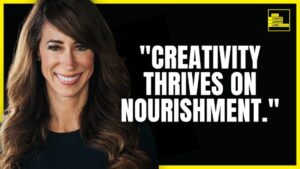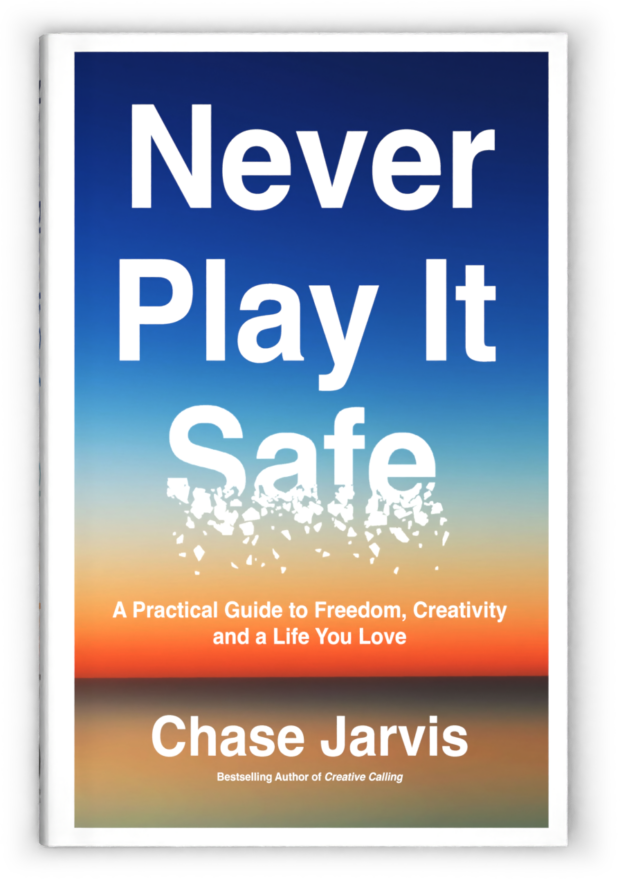Dr. Nicole LePera is a trained clinical psychologist with years of experience through Cornell University, The New School for Social Research and the Philadelphia School of Psychoanalysis. While extremely passionate for her field, she found herself frustrated by its conventional limitations and sought to expand her career in search of new solutions to mental wellbeing.
Dr. LePera invested immeasurable amounts of time and research into writing her first book, ‘How to Do the Work‘, which instantly became a New York Times bestseller. She also started the immensely popular #SelfHealers movement, an international community of people joining together to take healing into their own hands. Nicole joined me on a previous podcast about a year ago to share her insight on the process of recovering from past trauma.
I’ve been lucky enough to have her back for another episode, this time to discuss her new book ‘HOW TO MEET YOURSELF: A Workbook for Self-Discovery‘, the concepts within it, and her professional advice for those searching for a way to feel ‘unstuck’.
‘Where Do I Start?’
‘Where do I start?’; It’s the question we ask ourselves, and clients Dr. Nicole LePera, the most. Sure, guidance and actionable tips from the chapters of her first book are helpful, but how do you know when they apply to your own life? What specific behaviors or habits need adjusting? You need to be able to fully identify a problem in order to implement a solution, after all.
According to Dr. LePera, the best way to gain insight into your own flaws is learning “how to live in a state of conscious awareness”. This doesn’t just mean being physically awake – it involves a three phase process of consolidating all facets of your being as a whole. Nicole explains how she outlines it in her workbook; start by taking the time to understand your body and how the choices you make impact it; peel back another layer and address the mind – how is your mental state influencing the way you live life? Finally, delve into the final phase of discovering who you really are. Dr. LePera’s book obviously goes into much better detail, but the gist of the process is taking the time to understand your state (physical, mental and emotional) and how different habits impact it. Getting ‘unstuck’ means knowing why you’re stuck in the first place through self-reflection.
Becoming Self Aware
We need to become self aware in order to properly identify and address what’s holding us back. Makes sense. But for some people, it’s easier said than done. We may recognize an inner desire to change, yet have trouble fully grasping what ‘awareness’ really means. What does it look like in practice? How is it different from the way I’m doing things now?
Nicole starts explaining it with reference to most people’s current, or default behaviors. Many of us are locked in ‘autopilot’ in day-to-day life – regular routines, expectations and practices that take consciousness out of the decision-making process. We have very little, if any, space between stimulus and response, and it’s often only after the fact that we ever realize we’ve done something that wasn’t in our best interest.
The logical counter strategy? Slowing down. Learning to take the time to acknowledge our moments of thought in and of themselves, and the physical and emotional reactions they cause. From head to toe, we learn how to observe when our mind is having a thought and check in on how our body is experiencing the current moment. What sensations are happening? Can I do a body scan to tune into how my muscles feel? How is it to be physically present in my body right now?
That’s awareness. Noticing how our response to situations has changed and taking the time to observe why.
Grounding Yourself
During our discussion, Dr. LePera and I also spoke about individual history and how our backgrounds as people can shape the habits we have today. She pointed to a specific example from her own upbringing; having lived in a city for most of her life, Nicole grew up with an ‘always on’ state of mind. She was habitualized to external stimulation and constant action to the point that the concept of slowing down literally frightened her. It was a coping mechanism – Nicole, like many people in today’s busy society, had trained herself to push away any feelings of stillness or loneliness. It’s an effective tactic, one that keeps your mind from going a mile a minute. But it’s also a sign of discomfort in one’s own body. A symptom of being out of touch with your own feelings, behaviors and experiences.
To work through this, Nicole suggests the practice of grounding. It’s a way of connecting to yourself and your environment so you can be more conscious of the current moment. Grounding can take on various forms – from taking a few deep breaths, to eating something healthy, or simply sitting on the floor with your feet touching it. The goal is to be intentional. To override the automatic responses ingrained in our brains that stopping isn’t safe.
It’s about allowing yourself to simply be, and taking the time (no matter how short) to recognize that you are alive in this moment.
Putting Intentions Into Practice
The process of becoming self aware and grounding yourself are only two examples of the necessary work that goes into discovering who you really are. It’s a process that involves looking at our history, understanding our motivations, and learning to be present with ourselves.
It’s about being honest with how we’re feeling and learning to trust our intuitions. It’s about understanding the source of our underlying insecurities, so that we can move forward in life with greater clarity and purpose.
Through this practice of self-discovery, we can learn to break away from the social conditioning and expectations that keep us locked in a state of autopilot. We can become mindful of our thoughts and actions, so that we may live with greater intention, peace, and in turn, prosperity.
FOLLOW DR. LEPERA:
instagram | facebook | website






















